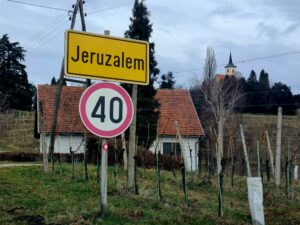Wowed by the grandeur of Lillafüred, we continued on our way towards the town of Diósgyőr, now part of the northern Hungarian city of Miskolc. Himself had gotten wind of a castle-castle this time and since it was sort of on our way back to Budapest, we thought: Why not?
What is it with royalty and their extravagances? Óbidos in Portugal became a wedding gift for queens.
Back in the 13th century, King Dinis I of Portugal set a trend. When his wife, Queen Isabel, visited the village of Óbidos, she fell in love with it. He, having the kingdom at his disposal, gave it to her as a wedding present. The precedent set, the heirs to the throne followed suit, bestowing the lovely town on their brides.
It was Sigismund of Luxembourg (also King of Hungary and Croatia from 1387) who started the ball rolling on presenting Diósgyőr castle as an engagement present to his queen to be. Five other kings followed suit, including King Matthias. It’s no wonder it got the name, the Castle of Queens. The last queen on the title deed was Maria, wife of Louis II, who gave it up in 1546 to the ruling prince of Transylvania.
But I’m getting ahead of myself.
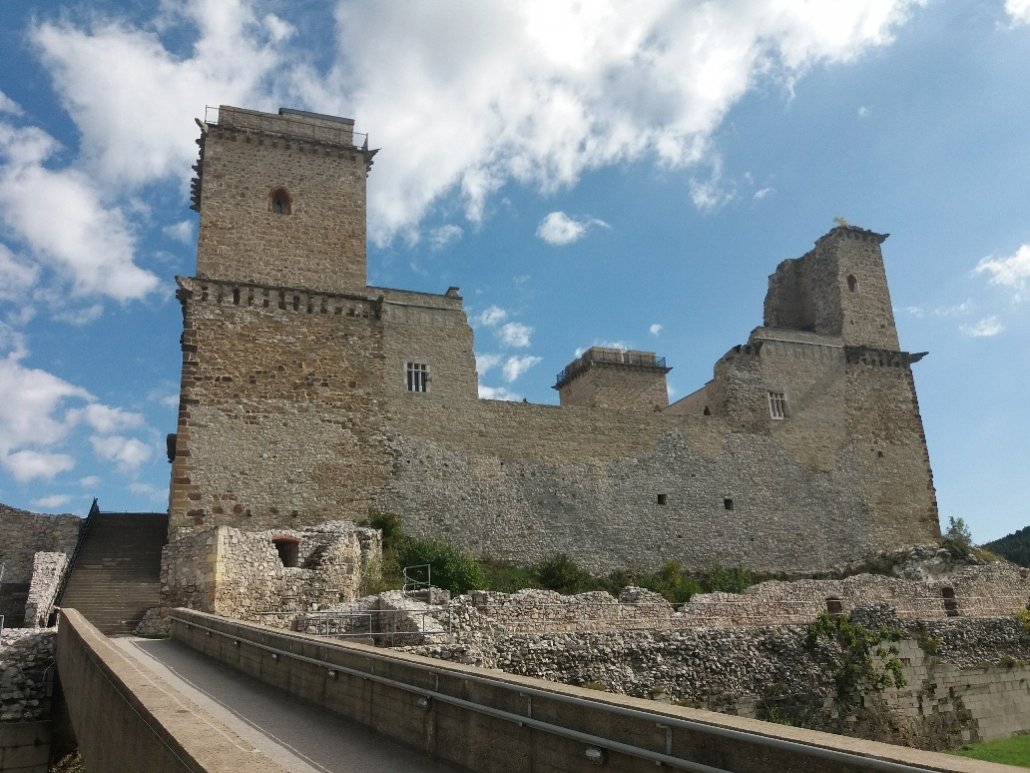
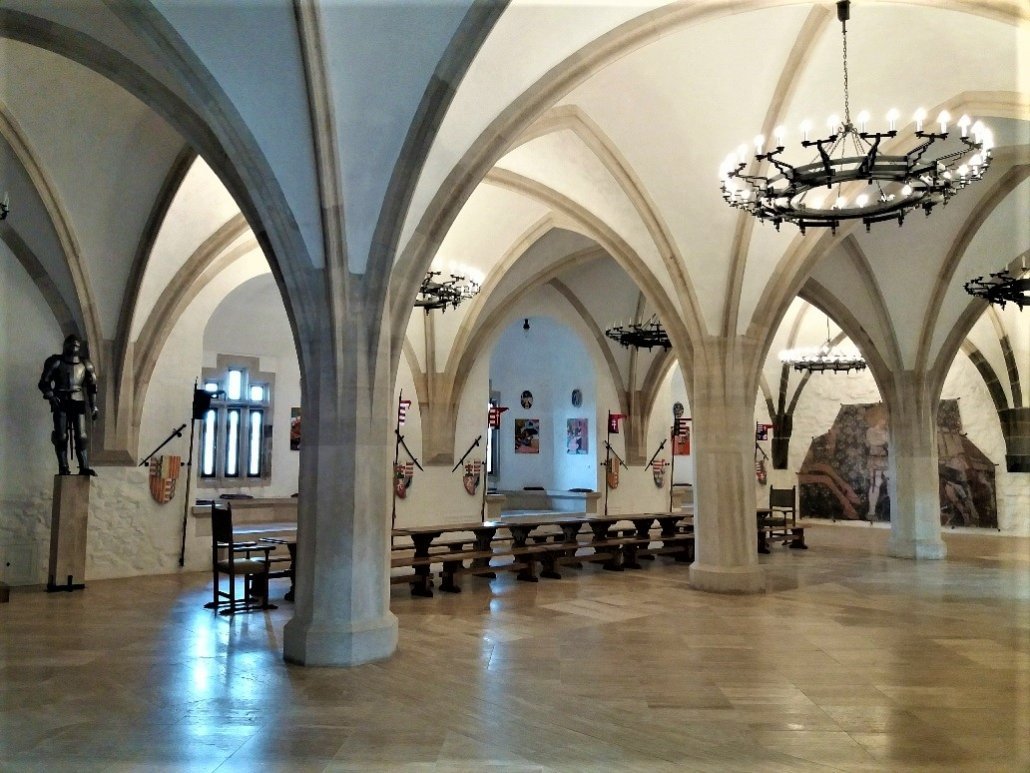
There’s been a castle on the site since the twelfth century. The original one was destroyed during the Mongol invasion around 1241 and what’s there today dates back to the 1300s, most likely built by King Béla IV who had a thing for building castles on hilltops. When Louis the Great became King of Poland, he undertook a major renovation adding the great Knights Hall. I wondered what Louis the Great was doing in Hungary when he was King of Poland. I hadn’t known that before he was Louis the Great, he was Louis of Hungary, the nephew of the Polish king Casimir who had no sons of his own. Louis seemed more interested in Hungary than in Poland, though, and after he was crowned king, he returned to his home country leaving his mother and his aunt as regents in Poland. It didn’t end well.
Back in 1381, one of the four treaties blanketed by the Peace Treaty of Turin was signed in Diósgyőr castle. Again, some homework left me openmouthed at the reach of Hungary back in the day and the convoluted web of who’s who of what’s what in the noble lineage of rulers. As long as Louis was in power, Diósgyőr was important. But when the 12-year Hungary-Poland agreement ended, it lost a little of its veneer.
Louis’ story is an interesting one. He fell hard for and married 14-year-old Elisabeth of Bosnia in 1353. He was 27. Yes, different times, folks. The mind boggles. It would take 17 years before they had children (and then they had three girls). Rumour has it that Elisabeth was considering divorce in the fourteenth-century fashion: she’d join a monastery leaving Louis free to find another wife. But a miracle happened while the pair were on holiday on the Dalmatian coast and all was well-ish.
Diósgyőr castle changed hands a lot over the years and finally fell when the Ottomans defeated the Christians at Mezőkeresztes. It hadn’t a hope really – it was never intended to be a fortress, more of a holiday residence. The most recent restoration began in the early 1950s and while not every door was open, we managed to see quite a bit of it.

The views from on top are lovely. Diósgyőr castle is unusual in that it’s not surrounded by an old town but nestled in a modern neighbourhood. The juxtaposition of old and new is remarkable.
I was particularly taken by the herb room and the old armour. But most of all it was the sense of excitement at not knowing what was behind the next door. It’s the only way to do it. Yes, we had maps. And yes, we could have rented headphones had we discovered them before not after, but just wandering through the connecting doors and leaving it all to chance was a treat.

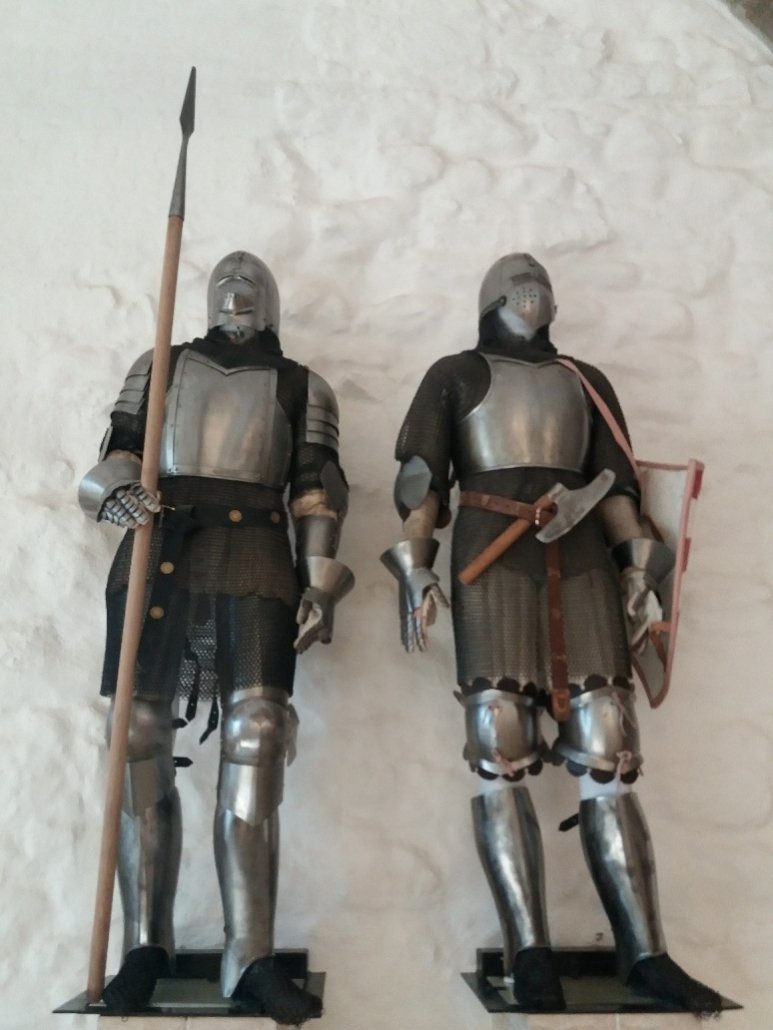
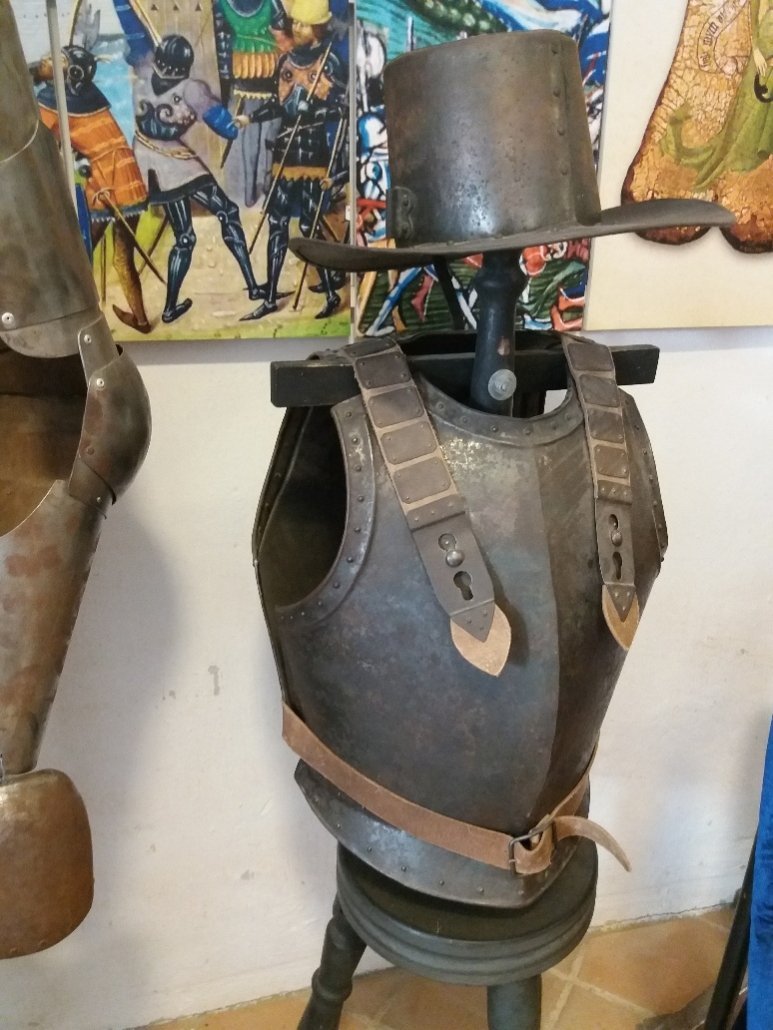

One of the rooms we happened upon was the room of knowledge. The interactive display allowed us to key in our dates of birth and check our horoscopes. I wasn’t at all impressed:
She’s a cunning person, sly and vile. Healthy but prone to develop dementia. She will live for long.
Sly? Vile? And dementia of all things – I dread it. Himself was laughing on the other side of his face when he read his:
This person is very shy, unclean, and is sick a lot. Won’t live for long.
It definitely brings the relativity of ‘long’ into question!

What we missed
Apparently, the outer castle is home to one of the largest waxworks exhibitions in Central Europe! Not quite sure how we missed that. We were a little late for the Kaláka folk festival, held over the second weekend of July each year. But note has been made for next year. And we need to watch out for the medieval fair.
Getting there from Miskolc
In Miskolc, take tram 1 or bus 1 to Diosgyor vk. and walk about two minutes to the castle.
Share this:
- Click to share on Twitter (Opens in new window)
- Click to share on Facebook (Opens in new window)
- Click to share on Pinterest (Opens in new window)
- Click to share on LinkedIn (Opens in new window)
- Click to share on Reddit (Opens in new window)
- Click to share on WhatsApp (Opens in new window)
- Click to share on Pocket (Opens in new window)
- Click to share on Telegram (Opens in new window)
- Click to email a link to a friend (Opens in new window)





